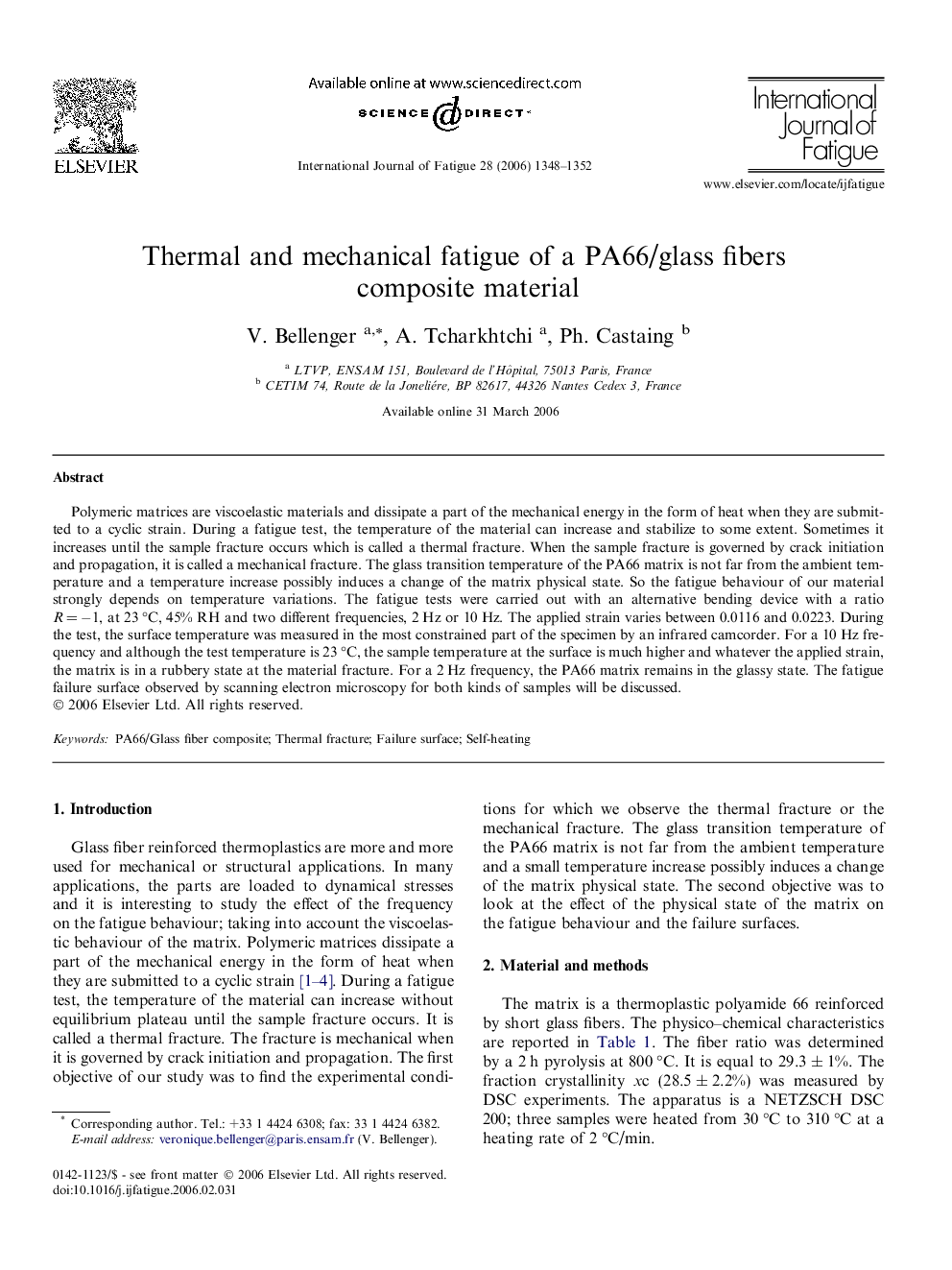| Article ID | Journal | Published Year | Pages | File Type |
|---|---|---|---|---|
| 781750 | International Journal of Fatigue | 2006 | 5 Pages |
Polymeric matrices are viscoelastic materials and dissipate a part of the mechanical energy in the form of heat when they are submitted to a cyclic strain. During a fatigue test, the temperature of the material can increase and stabilize to some extent. Sometimes it increases until the sample fracture occurs which is called a thermal fracture. When the sample fracture is governed by crack initiation and propagation, it is called a mechanical fracture. The glass transition temperature of the PA66 matrix is not far from the ambient temperature and a temperature increase possibly induces a change of the matrix physical state. So the fatigue behaviour of our material strongly depends on temperature variations. The fatigue tests were carried out with an alternative bending device with a ratio R = −1, at 23 °C, 45% RH and two different frequencies, 2 Hz or 10 Hz. The applied strain varies between 0.0116 and 0.0223. During the test, the surface temperature was measured in the most constrained part of the specimen by an infrared camcorder. For a 10 Hz frequency and although the test temperature is 23 °C, the sample temperature at the surface is much higher and whatever the applied strain, the matrix is in a rubbery state at the material fracture. For a 2 Hz frequency, the PA66 matrix remains in the glassy state. The fatigue failure surface observed by scanning electron microscopy for both kinds of samples will be discussed.
